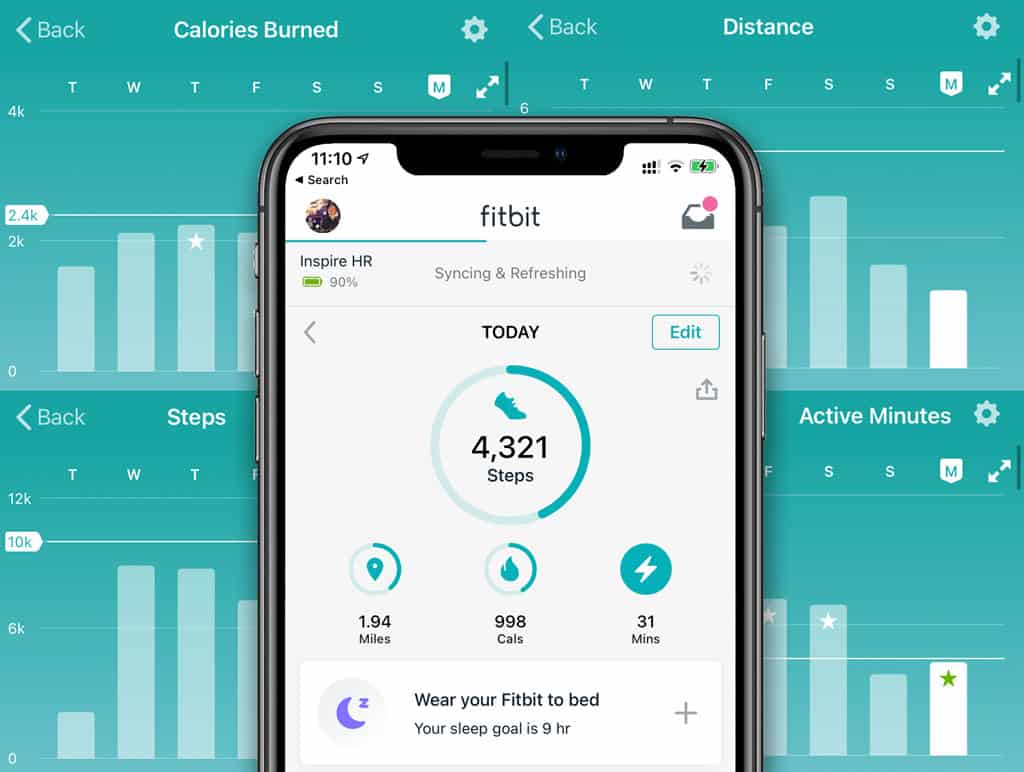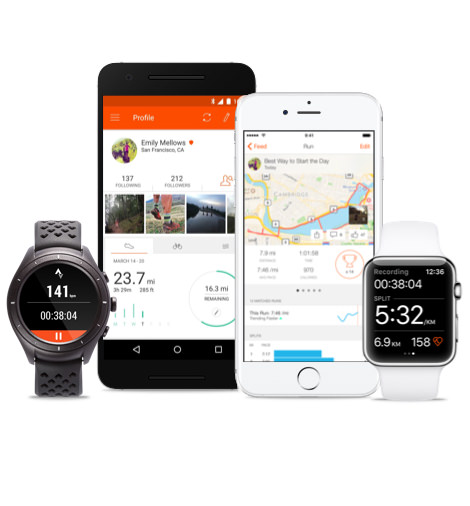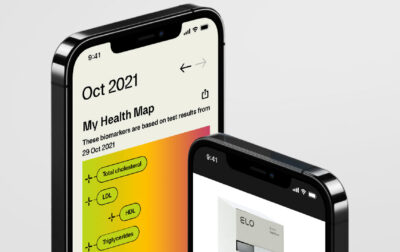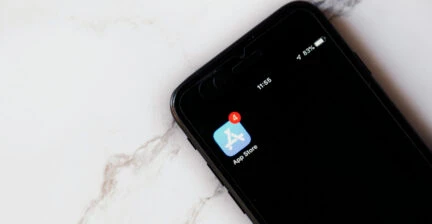How to build a fitness app – A detailed guide
Intro
Fitness and healthy living are heavily influencing people’s daily routines and priorities. Fitness applications make it easier to access healthier lifestyles, and smartphone users are embracing the trend – in 2024, global Health & Fitness app downloads reached a new high of 3.6 billion across iOS and Google Play. Fitness app market is always expanding with trends like AI, personalized health plans, or integration with wearables.
Entering this vast market might seem like an alluring – and potentially profitable – opportunity. In this case, what do you need to know to make sure your application is successful? Touchlane answers this question in this detailed guide on how to build a fitness app that can win its audience and show solid performance in app stores.
Tips for choosing the right platform for your fitness app
Choosing the right platform for your fitness app impacts its reach, performance, and development expenses. Each option – iOS, Android, or cross-platform – presents distinct advantages and disadvantages. Understanding these differences aids in selecting the best fit for your business goals.
iOS development
Apple’s iOS holds a significant market share, especially in North America, where it has over 60% of the smartphone users on its side. As of 2025, iPhones accounted for approximately 27.65% of the global smartphone market. iOS is your best choice if you are looking to target premium markets as their users exhibit higher engagement and spending patterns. Developing exclusively for iOS can lead to a polished user journey. But at the same time, it limits your app’s availability to Apple device users. Development timelines may also be impacted by the differences between iOS and Android’s app store approval procedures. Each iOS submission is carefully examined for security, performance, design, and compliance with Apple’s guidelines as part of the rigorous and frequently drawn-out review process. If the app is rejected and needs to be modified before being resubmitted, this could cause delays.
Android development
Android dominates the global mobile operating system landscape. As of Q1 2025, it has a market share of around 71.88%. Its wide reach, particularly in emerging markets, offers the benefit of accessing a broad and diverse user base. Furthermore, Android’s open ecosystem allows for customization and flexibility in app design. Yet, the variety of devices and operating system versions can present challenges in maintaining consistent performance across all Android devices.
Cross-platform development
Developing apps for both iOS and Android from a single codebase is possible through cross-platform frameworks like React Native and Flutter. These frameworks allow for performance and design that closely resemble native applications. This method reduces development time and costs, making it appealing for businesses seeking wide user access without separate builds. However, cross-platform frameworks may encounter difficulties with specific native functionalities and might not achieve the same speed and responsiveness as fully native development.
To sum it up, you need to consider the following factors to make your choice:
- Target audience. If your customers primarily use iPhones, iOS development may be the better fit. If your goal is a broad global reach, Android or cross-platform solutions are your top picks.
- Development costs. Native development for both platforms increases costs as it requires separate codebases. If you are looking for cost-effective alternatives, it is worth contemplating cross-platform development.
- Performance needs. Native development provides the best performance, especially for resource-intensive features.

Key features and functionalities of a fitness application
If choosing the platform is the first major step in the quest on how to make a fitness app, picking the right functions is definitely the second.
Let us explore three essential functionalities that form the backbone of a successful fitness app and make it both engaging and effective.
Workout tracking
Users want to track their workouts with precision. This feature lets them enter details such as exercise type and intensity, as well as reinforce their progress and commitment. For example, MyFitnessPal provides a broad workout logging system to allow users to record different activities and monitor their improvement over time.

Source: myfitnesspal.com
Progress monitoring
Visualizing progress keeps users motivated. Fitness apps with clear analytics and progress reports show users how they are improving and enable them to plan the next goals. Apps like Fitbit excel in this area – they offer insights into metrics such as steps taken and calories burned. Thus, users feel empowered to make informed decisions about their health.

Source: myhealthyapple.com
Integrations with wearables
Integration with wearable devices keeps data synchronized in real time. Users access the latest information without manual input. Strava, for example, connects with various wearables and allows users to track activities and share achievements within a community.

Source: strava.com
Challenges and solutions in fitness app development
Data privacy and security
Fitness apps handle personal health data. This includes sensitive information like age, weight, health history, workouts, heart rate, and even sleep patterns. A data breach could expose sensitive information and lead to legal consequences, as well as loss of user trust.
Solution / Encrypt data during storage and transmission to prevent unauthorized access. Follow industry regulations like GDPR (for European users) and HIPAA (for U.S. healthcare data). Allow users to manage permissions, such as whether their data can be shared with third-party services.
Industry practice / Apple Health requires explicit user consent before sharing data with fitness apps to confirm its commitment to transparency.
User engagement and retention
Many users start their fitness journey with enthusiasm but stop using the app after a few weeks. Without motivation, they may delete the app or switch to a competitor.
Solution / Keep users engaged and incorporate gamification elements – these could be streaks, achievement badges, or social challenges. Personalized workout reminders based on past behavior can also improve retention.
Industry practice / Strava organizes community-driven challenges to encourage users to stay active through competing with friends and other users, as well as earning rewards.
Technical integration with wearables and third-party APIs
Fitness apps need to pull data from wearables like smartwatches and fitness trackers, as well as third-party services (Google Fit, Apple Health, Fitbit). These devices use different data formats, which creates compatibility issues.
Solution / Use standardized APIs like HealthKit (iOS) and Google Fit (Android) to collect and process data efficiently. Build an adaptable backend that can handle data synchronization without duplication or errors.
Industry practice / As mentioned above, our team used HealthKit for health data integration throughout the Elo Health project. Additionally, Touchlane’s engineers employed AWS Amplify for backend support.

Interested in building a health app? Discuss your ideas with our team
How to create a workout app – The development process
Developing a workout application involves a series of strategic steps – each of them contributes to the creation of a functional and engaging product. In this section, Touchlane’s team will share them based on the examples of two apps we worked on, Racefully and Elo Health.
1.
Define the core functionality
Start by outlining the key functions of your app, as seen in the section above. Racefully built live running sessions, community interaction, and fitness tracking. Elo Health introduced AI-driven nutrition recommendations and personalized health plans. A clear feature set lays the groundwork for development.
To truly stand out, the app needs a defining feature – something that grabs attention and sets it apart from competitors. Whether it is an advanced performance analysis, real-time coaching, or an exclusive challenge system, this standout element will make the app impossible to ignore.
2.
Assemble the development team
Engage skilled professionals to bring your vision to life. Both Racefully and Elo Health projects utilized the staff augmentation model to enhance the client’s teams with experienced developers from our side. This helped ensure efficient progress and high-quality outcomes. A well-rounded team is crucial for addressing various technical and design challenges.
3.
Choose the appropriate technology stack
Your app’s performance and scalability depend heavily on the right technologies. Built in 2016, Racefully used Objective-C, which was still a widely used language despite the rapidly rising popularity of Swift. The development team integrated services like Google Firebase for live synchronization and Amazon Cognito for user authentication. Elo Health adopted Swift and incorporated HealthKit for health data integration and AWS Amplify for backend support.
Each project was built with the most relevant technologies available at the time. Following the same approach, we select modern, reliable tools to meet current development needs.
4.
Develop and integrate features
At this stage, the implementation of the core features identified earlier begins.
Racefully‘s team developed functionalities for live running sessions and community engagement. The engineers integrated external resources for VoIP services and chats.
Elo Health focused on creating a complex onboarding process, in-app widgets, and a chat feature with health coaches. The team addressed challenges like custom chat integration and flexible user flows.
Thoughtful feature development promotes and supports user engagement and satisfaction.
5.
Address challenges and optimize performance
Always think two steps ahead and anticipate potential issues to improve the user experience while allowing room for future scaling and development. In the case of Racefully, the development team tackled issues like integrating multiple external services and developing algorithms for activity tracking, including auto-pause features and calorie calculations. Elo Health addressed backward compatibility with AWS backend services and implemented custom controls to provide UI consistency.
Proactively managing such challenges contributes to a smoothly running application.
6.
Test and launch
Before release, conduct comprehensive testing to identify and fix issues. A successful launch is followed by ongoing monitoring and updates to adapt to user feedback and changing needs.
Both Racefully and Elo Health emphasized post-release support and maintenance. We continually added features and improved user experience for these apps.
7.
Start building the community
When the development process is over and the application is launched, the work continues to attract and retain the audience around it. There are several ways you can employ to achieve this.
- App store visibility. If you want to improve the search rankings of your app, include a well-written description with relevant keywords and clear screenshots. Positive reviews and ratings also boost credibility.
- Social media promo. Sharing workout challenges, success stories, and app updates keeps users involved. Promotion opportunities such as running contests or collaborations with fitness experts encourage more people to join.
- Media coverage. Features in fitness blogs, tech websites, and podcasts introduce the app to a broader audience. You can try to offer expert insights or unique angles that make it easier to get your app noticed.
- Working with the community. To build stronger connections with users, it is beneficial to add interactive content, such as Q&A sessions or live workouts. In addition, you can promote the app by starting discussions in forums and responding to user feedback.
Building a community around your app takes time. However, it plays a key role in keeping users entertained and attracting new ones. A mix of the methods above helps create a loyal audience. If you are looking for ideas on how to make your own fitness app stand out, focusing on these strategies from the start will set the foundation for long-term success.

Conclusion
In order for a fitness application to be successful, it must be built on the right platform, offer the right features, and overcome business and technical challenges.
If you are exploring how to make a workout app and want to create a high-performing solution, a reliable development partner can make all the difference. With the experience of building apps like Racefully and Elo Health, we at Touchlane can tackle complex integrations and deliver smooth user experiences. Get in touch with our team to discuss how we can bring your vision to life.
RELATED SERVICES
CUSTOM MOBILE APP DEVELOPMENT
If you have an idea for a product along with put-together business requirements, and you want your time-to-market to be as short as possible without cutting any corners on quality, Touchlane can become your all-in-one technology partner, putting together a cross-functional team and carrying a project all the way to its successful launch into the digital reality.
If you have an idea for a product along with put-together business requirements, and you want your time-to-market to be as short as possible without cutting any corners on quality, Touchlane can become your all-in-one technology partner, putting together a cross-functional team and carrying a project all the way to its successful launch into the digital reality.
We Cover
- Design
- Development
- Testing
- Maintenance











